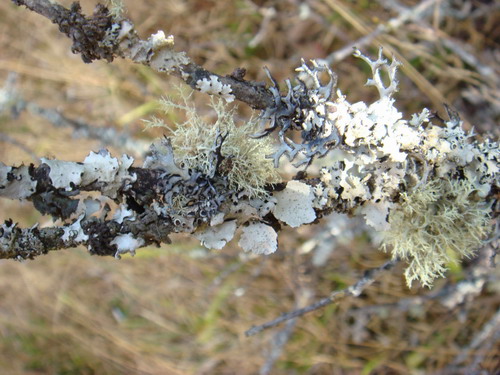Epiphytic lichens are a widespread and significant component of forest structure and play a vital role in biodiversity conservation, environmental monitoring and nutrient transformation in tropical, subtropical, temperate and boreal forests. Although epiphytic lichens have been studied among the primary and secondary forests of the Ailao Mountains, a major feature of southwestern China, very little is known about their vertical stratification.
Prof. LIU Wenyao and his team of Xishuangbanna Tropical Botanical Garden (XTBG) have focused on studies of epiphytic lichens in Ailao Mountains of SW China for many years. In a recent study, they analyzed the vertical stratification (layering of habitats) of epiphytic lichens in two primary and three secondary forests in the Ailao Mountains, based on the combined surveying of treefalls and standing living trees. They aimed to seek how epiphytic lichen species and functional groups change with tree height in subtropical forests and how forest type, and tree attributes (host species, height and diameter) influence their stratification.
Their first entire-tree survey for epiphytic lichens showed that the primary montane moist broad-leaved forest and three secondary forests had more abundant lichen flora, in terms of species richness and cover, while the primary dwarf mossy forest had the lowest values. Lichen species number and cover tended to increase from the tree base to the tip in the primary montane moist broad-leaved forest, while they first increased (up to different heights) and then decreased in the other forests. Five functional groups (crustose lichens , cyanolichens , fruticose lichens, broadly-lobed foliose lichens with green algae and narrowly-lobed foliose lichens with green algae) of epiphytic lichens showed distinct vertical stratification, which presumably reflected the differing degrees of their adaptation to light and humidity conditions.
The study results clearly suggested that strong vertical stratification of epiphytic lichens occured in the subtropical forests in southwest China and differed among forest types. The species composition of epiphytic lichens was also more determined by forest type than by vertical zone. Host species significantly affected the distribution of epiphytic lichens while host diameter and height had a modest influence.
The study entitled “Species richness and vertical stratification of epiphytic lichens in subtropical primary and secondary forests in southwest China” has been published online in Fungal Ecology.

Rich epiphytic lichens on small branches (Image by LI Su)

